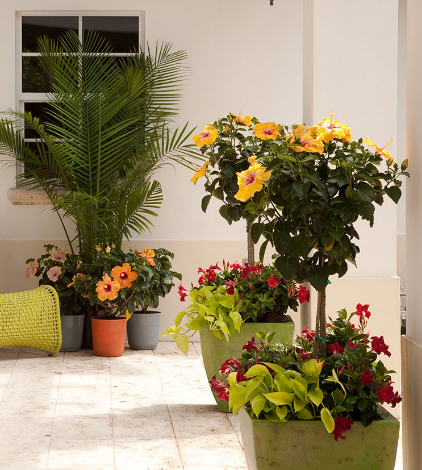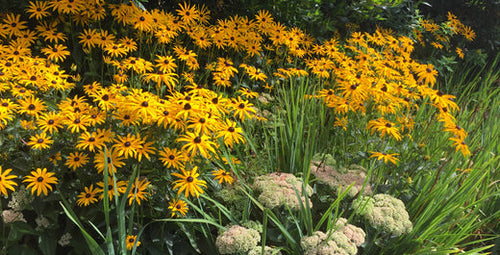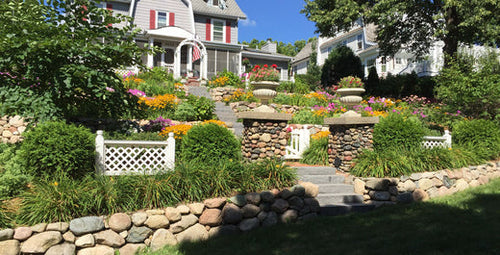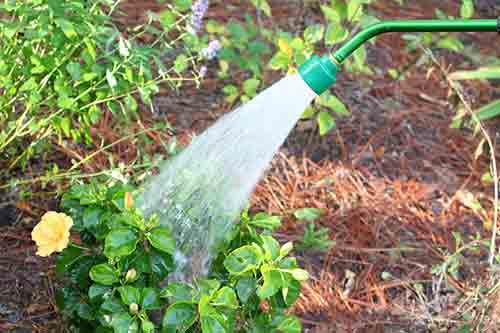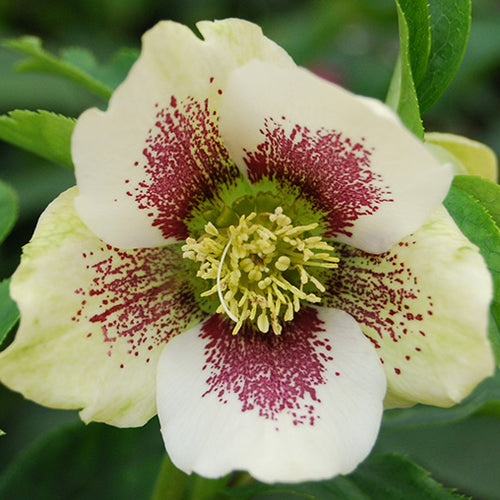By Justin Hancock

How do you know which perennials you should plant in your garden? Great question! And one that deserves some thought before you start purchasing plants.
The number one rule for success when it comes to gardening is to put the right plant in the right place. So take stock of your area’s growing conditions, including the amount of sun or shade your perennial garden will see, what kind of soil your perennial garden will have, how hot your summers are, and how cold your winters are.
The Right Light
When it comes to light, your garden is considered full sun if it gets at least 6 to 8 hours of direct sunlight a day throughout most of the gardening season. It’s considered part sun (or part shade) if you gets between 3 and 6 hours of direct sun per day, particularly in the afternoon. And it’s usually considered shade if it sees less than 3 hours of direct sun.
Know Your Soil
Your garden’s soil type plays an important role for certain types of perennials. For example, lavender likes good drainage and will sulk in heavy clay soils that stay wet for extended periods after a rain or watering. Likewise, moisture-loving perennials such as ligularia can have trouble thriving in especially sandy soils that don’t hold moisture well and dry out quickly.
Climate Matters
Most common perennials will thrive throughout most of North America during the summer, but there are a few varieties that hate hot, humid summers (such as some types of heuchera). If you live in the Deep South, these plants may not be for you. For example, I tried -- unsuccessfully -- for several years to grow the spectacular Himalayan blue poppy when I lived in Iowa, but my region’s hot, humid summers melted the plant every single time.
Because perennials typically go dormant during the winter, it’s important to choose plants that tolerate the amount of winter cold your yard usually experiences. A helpful guide in this is the USDA Hardiness Zone Map. Developed by the United States Department of Agriculture, it divides the country into zones based on the average coldest temperature each area sees. The lower the number, the colder the winter. So if you see, based on the map, that you live in Zone 5, you may not be able to grow perennials rated for zone 6 because they don’t tolerate that much cold.
That said, the USDA Hardiness Zone Map is more of a general guide than a hard-and-fast rule. Your neighborhood -- or yard -- may have microclimates, or special pockets that are warmer or colder than the surrounding area. For example, perennials planted right up against the side of your house will have a little extra protection than those planted at the far end of your yard. Likewise, perennials near the top of a hill can stay a little warmer than those planted at the bottom of one because cold air is denser, flows down slopes, and pools at the bottom.
The other main limitation of the USDA Hardiness Zone Map is that it’s based on averages. If your area experiences a colder-than-average winter, your Zone 5 garden might experience a Zone 4 -- or even Zone 3 winter. Most perennials need a certain amount of temperatures in order to go dormant, so the process works in reverse in the Deep South, as well. A warmer-than-average season might mean your Zone 8 winter has Zone 9 conditions, which could prevent some perennials from flowering well.

Pick Plant Qualities that Are Important
After you’ve mapped out your yard’s growing conditions comes the fun part: Mapping out the attributes you like. Start by making a list of what’s important to you. Do you want perennials that will tolerate drought so you don’t have to water if it doesn’t rain for several weeks? Do you want perennials that are especially attractive to hummingbirds? Or do you want to grow flowers you can cut for bouquets and decorate indoors with? What colors do you like best during the different seasons? If you’re like me, your list of desired attributes can get pretty long, so you might need to prioritize to help make plant selection easier.
When you have your list of growing conditions and desired attributes, it’s fairly easy to go through the list of perennials and match up the ones that will work for you. If you’d like inspiration, start by paying attention to what’s growing in your neighborhood. Chances are if your neighbors have success with certain plants, you will, too. Also visit any local public gardens, including parks and botanical gardens. Again, the plants you see thriving there should also be good bets for you. The staff at these gardens, as well as the staff at your local garden center, can be excellent resources. You can also find a wealth of information online, such as our own Plant Finder, as well as books and magazines.











